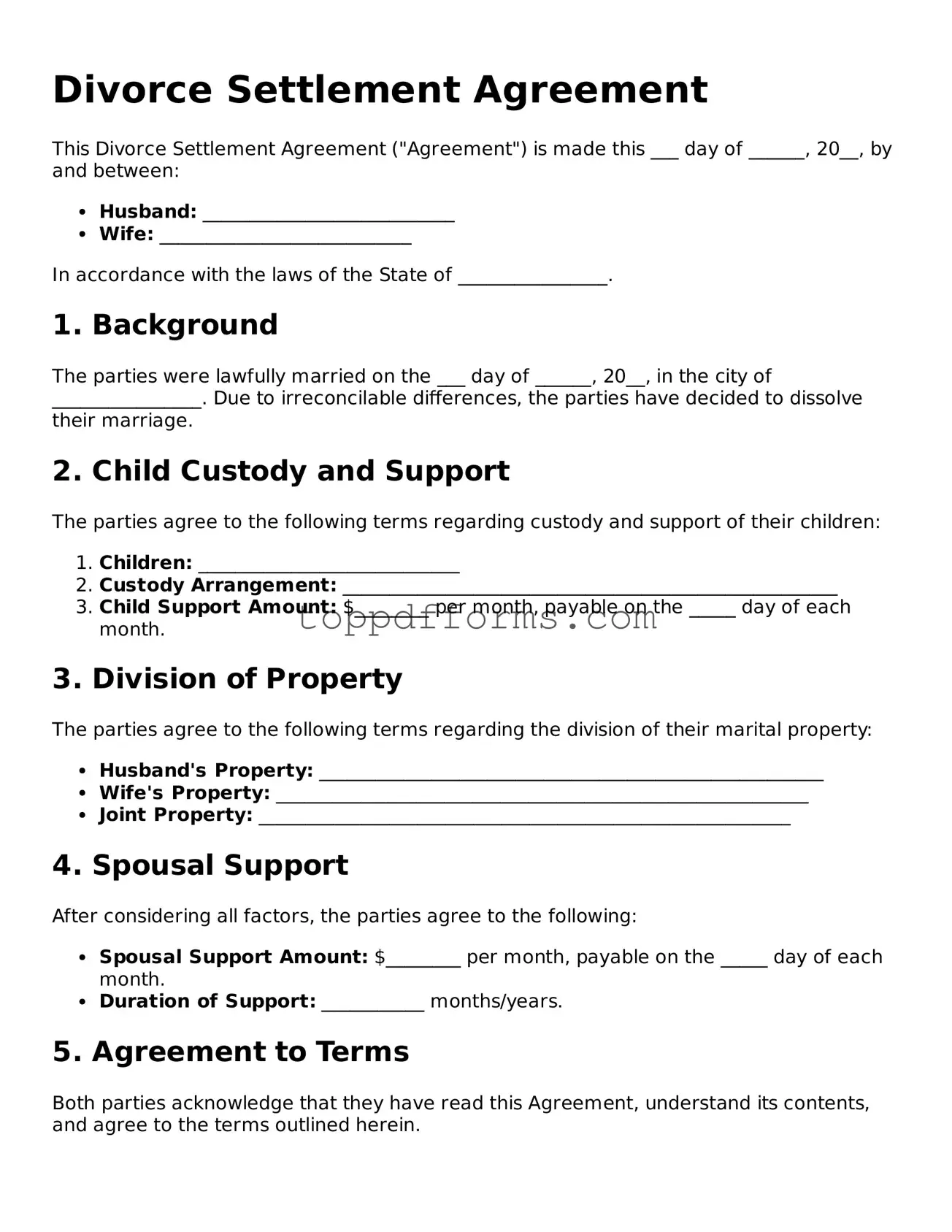What is a Divorce Settlement Agreement?
A Divorce Settlement Agreement is a legally binding document that outlines the terms and conditions agreed upon by both parties during a divorce. It typically covers aspects such as property division, child custody, child support, and alimony. This agreement helps to ensure that both individuals understand their rights and responsibilities post-divorce.
Why is a Divorce Settlement Agreement important?
This agreement is crucial as it provides clarity and structure to the divorce process. It helps to minimize conflict and misunderstandings between the parties involved. By having a clear written agreement, both individuals can refer back to it in the future, which can help prevent disputes over the terms agreed upon.
How do I create a Divorce Settlement Agreement?
Creating a Divorce Settlement Agreement typically involves negotiations between both parties. It is advisable to discuss each aspect of the divorce, such as asset division and child arrangements. Many people choose to work with attorneys or mediators to ensure that the agreement is fair and legally sound. Once both parties agree on the terms, the document should be written and signed.
Can I modify a Divorce Settlement Agreement after it is signed?
Yes, modifications can be made to a Divorce Settlement Agreement after it has been signed, but both parties must agree to the changes. It is important to document any modifications in writing and have both parties sign the updated agreement. This helps to ensure that the new terms are legally enforceable.
What happens if one party does not comply with the agreement?
If one party fails to comply with the terms of the Divorce Settlement Agreement, the other party may seek legal recourse. This could involve filing a motion in court to enforce the agreement. Courts generally take such matters seriously, especially when it comes to child support or custody arrangements.
Is a Divorce Settlement Agreement the same as a divorce decree?
No, they are not the same. A Divorce Settlement Agreement is a document that outlines the terms agreed upon by both parties. In contrast, a divorce decree is a court order that officially terminates the marriage. The decree may incorporate the settlement agreement, making it enforceable by the court.
Do I need a lawyer to draft a Divorce Settlement Agreement?
While it is not legally required to have a lawyer draft a Divorce Settlement Agreement, it is highly recommended. A lawyer can provide guidance on legal rights and obligations, ensuring that the agreement complies with state laws. This can help prevent issues that may arise later on.
How long does it take to finalize a Divorce Settlement Agreement?
The time it takes to finalize a Divorce Settlement Agreement varies based on the complexity of the issues involved and the willingness of both parties to negotiate. Some agreements can be completed in a matter of weeks, while others may take several months. Open communication can help expedite the process.
What if my spouse and I cannot agree on the terms?
If both parties cannot reach an agreement, mediation may be a viable option. A neutral third party can help facilitate discussions and find common ground. If mediation fails, the case may need to be resolved in court, where a judge will make the final decisions regarding the divorce terms.
Where can I find a Divorce Settlement Agreement form?
Divorce Settlement Agreement forms can often be found online through state court websites or legal aid organizations. Many attorneys also provide templates. It is important to ensure that any form used is appropriate for your state, as laws can vary significantly.
